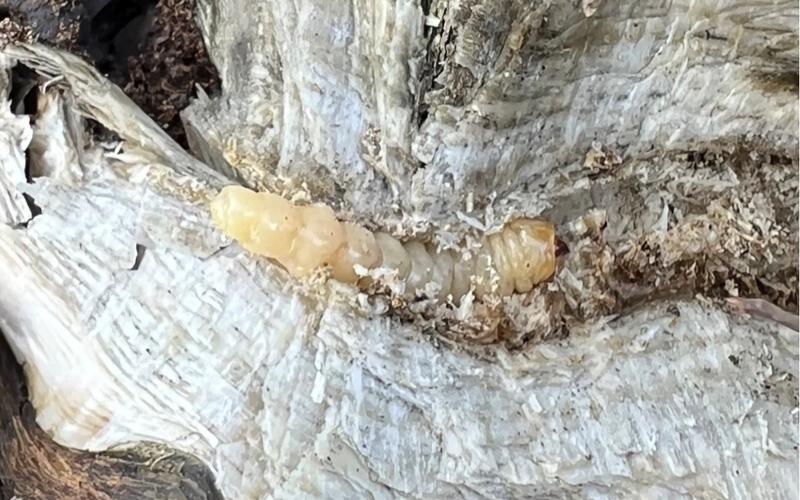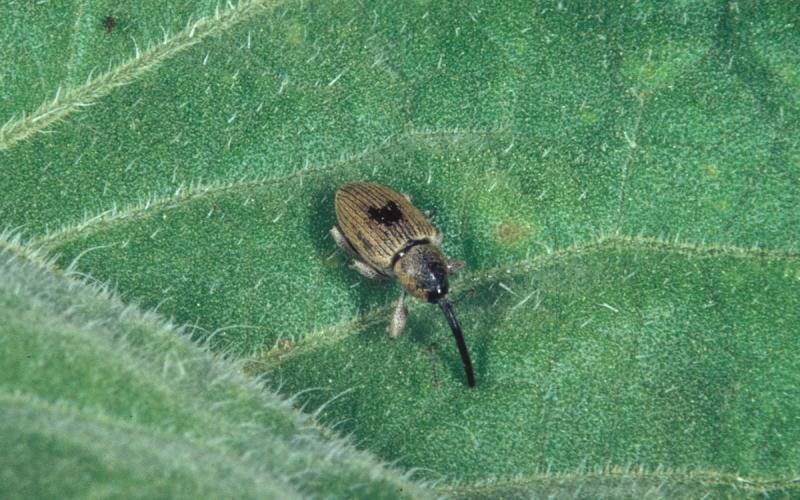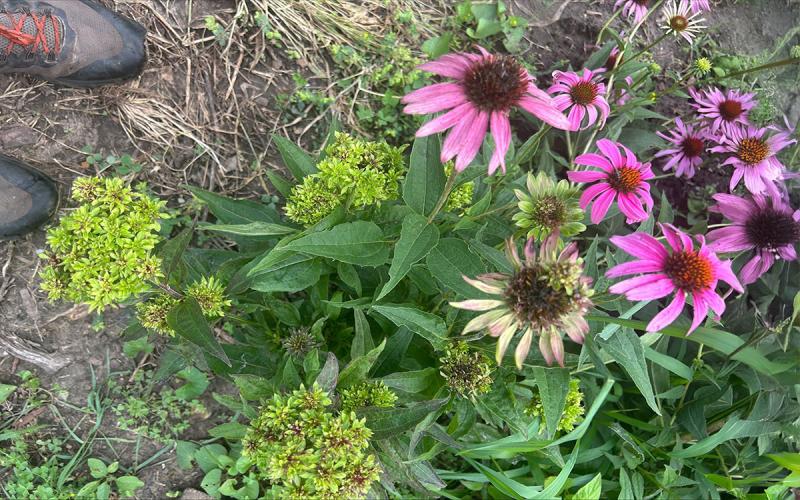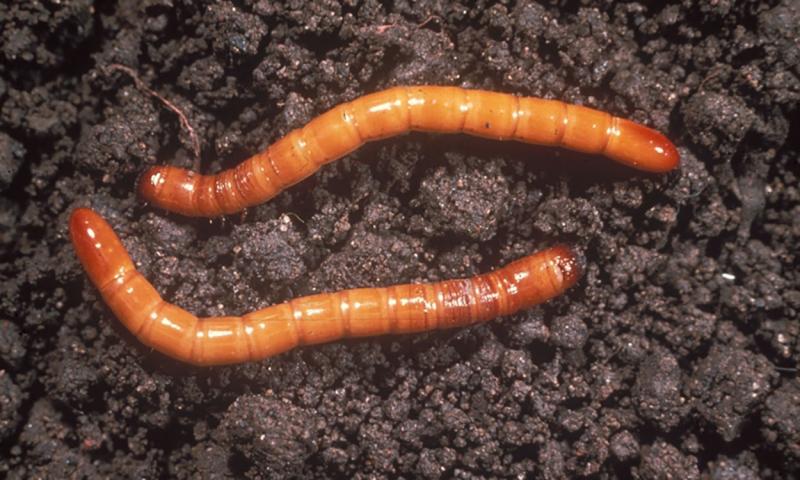
Written with contributions by Shelby Pritchard, former SDSU Extension Pest Management Specialist.
Originally Submitted: June 9, 2022
Some sunflowers in South Dakota are currently being attacked by wireworms (Figure 1). Infested fields have patches of emerging sunflower where the seed had been fed on, or the cotyledons had been removed. There are many different species of wireworms that may be present in a field, and they may vary dramatically in size and color based on species.
Wireworms are the larvae of click beetles, which are easily observed throughout the summer (Figure 2). Typically, wireworm populations are larger in fields that are following pasture, CRP or small grains, including wheat. Wireworms may be an issue for multiple years, as some species may be present in the soil for three years. Although wireworms, or the injury left by them, may be observed after planting, there are no rescue treatments available.
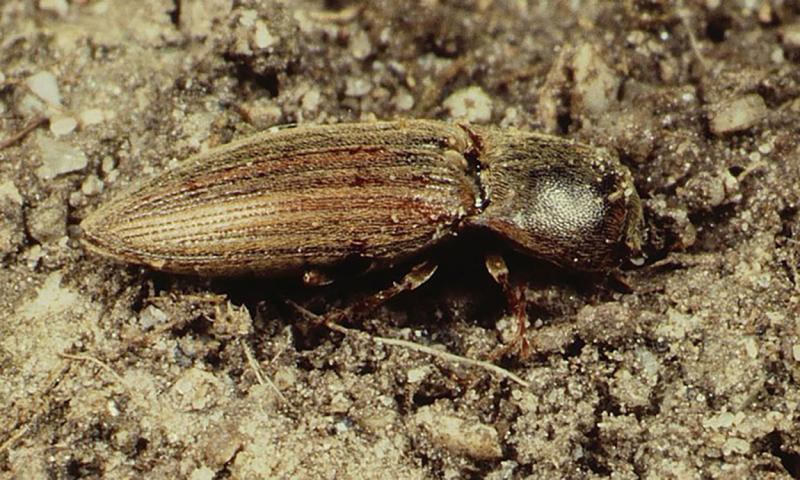
If wireworms are observed throughout the field, the options for management include replanting using an in-furrow insecticide or leaving the crop as is. Wireworms typically reduce stands in small patches in a field and will not remove large areas unless very large populations are present. Although insecticide seed treatments are labeled for wireworm management, there is evidence that they act as a deterrent or repellant and do not actually cause mortality of the wireworms if treated seed/plants are fed upon. If a crop is going to be replanted into a field where wireworms previously reduced stand, we strongly recommend the use of an in-furrow insecticide that is labeled for the crop.
Scouting
Wireworm scouting should occur prior to planting and consists of placing bait stations in questionable fields. Construct bait stations by digging a shallow hole and placing pre-germinated corn or wheat seed within. The hole should then be covered using black plastic and marked, so that it can easily be found later. Each week prior to planting, the bait stations should be monitored to determine if any wireworms were attracted to the pre-germinated seeds.
